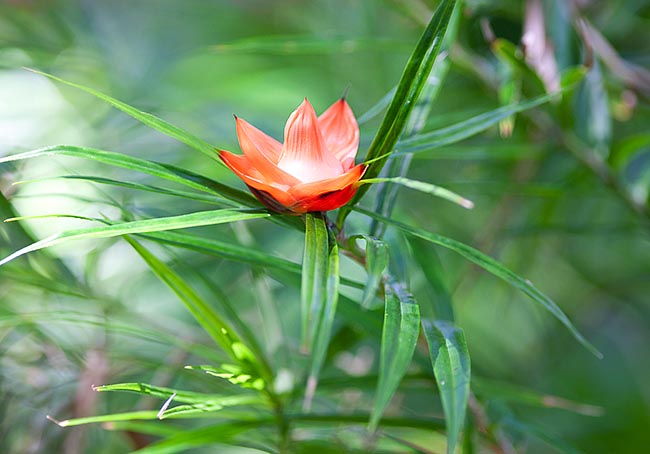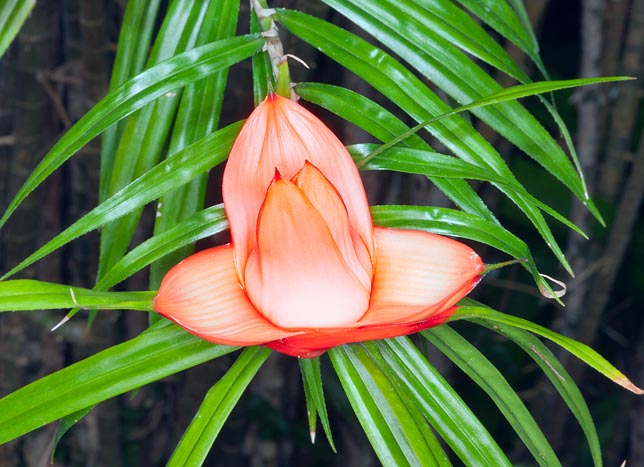Family : Pandanaceae

Text © Pietro Puccio

English translation by Mario Beltramini

Freycinetia cumingiana is a tropical climber with 0,5-2 m stems © Giuseppe Mazza
The genus is honoured to the French admiral Louis-Claude de Saulces de Freycinet (1779-1842), leader of the expedition of circumnavigation of the planet during which the genus was described for the first time; the species is dedicated to the English naturalist and collector Hugh Cuming (1791-1865).
Common names: climbing pandanus (English).
The Freycinetia cumingiana Gaudich. (1841) is a climbing dioicus (each individual carries either only male flowers or only female ones), rarely monoecious with unisexual inflorescences on the same plant, evergreen, with thin cylindrical stems, marked by the annular scars trace of the fallen leaves, 0,5-2 m long, which anchors on the trees and shrubs through the aerial roots. The leaves are alternate, amplexicaul (with the base embracing the stem), oblong-linear with pointed apex, 8-18 cm long and up to 2,5 cm broad, coriaceous, of dark green colour, thorny at the margins and on the central nervation in the lower page.
Inflorescences in spikes (3-4), cylindrical, compact, at the apex of the branches, enclosed in about 5 cm long bracts, of orange pink colour with long pointed apex.

Inflorescences in cylindrical, firm, spikes enclosed in about 5 cm long bracts © Giuseppe Mazza
It requires a slightly shaded position or filtered sunlight and draining soil, preferably acidic, constantly kept humid.
It can be grown leaning against a tree or a shrub or without support, in which case it assumes a rather procumbent habit.
Cultivable also in pot, in order to keep it sheltered in the coldest months in protected position, in soil rich of organic substance, with addition of siliceous sand or agri-perlite in order to improve the drainage, at the maximum possible luminosity and at lowest temperatures never under the 14 °C.
Synonyms: Freycinetia luzonensis C.Presl (1851); Freycinetia membranifolia Elmer ex Merr. (1922); Freycinetia luteocarpa Elmer (1938).
→ To appreciate the biodiversity within PANDANACEAE family please click here.
